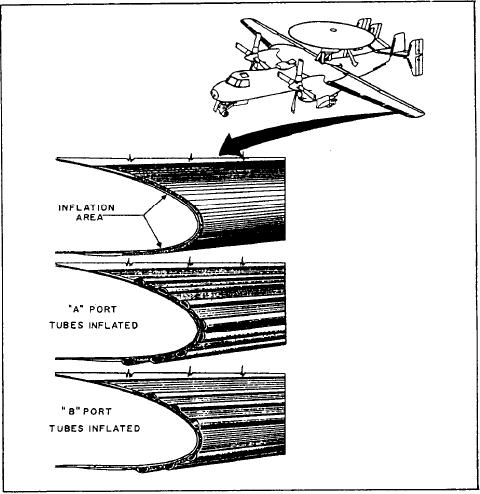
These systems include air-conditioning and
altitudes where freezing temperatures start. Water
pressurization, electronic equipment cooling,
droplets in the air can be supercooled to below
windshield washing, anti-icing, and anti-g
freezing temperature without actually turning into
systems. The bleed-air system also pressurizes fuel
ice. Ice forms when these droplets are disturbed
tanks, hydraulic reservoirs, and radar waveguides
in some manner. This unusual occurrence is partly
on several types of aircraft.
due to the surface tension of the water droplet
not allowing it to expand and freeze. However,
when the aircraft surfaces disturb these droplets,
In addition to supplying aircraft systems with
bleed air, some aircraft manufacturers use it to
they immediately turn to ice on the aircraft
provide extra lift to the wings. Design engineers
surfaces. The ice may have a glazed or rime
devised a system to duct engine bleed air across
appearance. The glazed ice is smooth and hard
the leading edge of the wing to increase the lift,
to detect visually. The rime ice is rough and easily
generating airflow. This system decreases the air-
noticeable.
craft stall speed and increases its slow flight
capability, which is desirable during aircraft
Frost forms as a result of water vapor being
carrier landings.
turned directly into a solid. It can form on
aircraft surfaces in two ways. It can collect
on aircraft parked outside overnight when the
Airframe Deicing and
temperature drops below freezing and the proper
Anti-icing Systems
humidity conditions exist. It can form on aircraft
surfaces when the aircraft descends rapidly into
On foggy days (visible moisture in the air), ice
warm, moist air after flying at higher cold
can form on aircraft leading edge surfaces at
altitudes. In this case, frost forms because of the
Figure 6-15.-Deicer boot location/operation.
6-18

